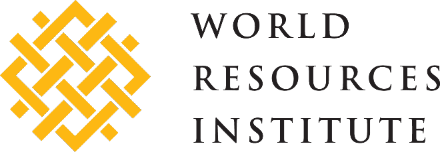Nature Crime: Illegal wildlife trade
TradeMapper
TradeMapper is an interactive tool to visualise trade data, through source, transit, and destination countries.
Wildlife Trade Portal
The most comprehensive open-access repository of wildlife seizure data. The Wildlife Trade Portal is an interactive tool that displays TRAFFIC’s open-source wildlife seizure and incident data.
Illegal Wildlife Trade – Red Flags
The Illegal Wildlife Trade (IWT) Financial Flows Toolkit is for financial institutions with particular focus on Africa, Asia and broader global financial centres. The toolkit also provides comprehensive resources for addressing wildlife trafficking, including practical guides and strategic frameworks. It offers tools for law enforcement and conservationists to improve their response to illegal wildlife trade, focusing on investigation techniques, legal frameworks, and inter-agency cooperation. The red flag guidance document within this toolkit compiles a set of key IWT-related red flag indicators to help financial institutions identify the key signs of suspicious activity related to IWT. Some of these red flags are common to other types of crime, but are particularly relevant to IWT.
Guidance To Photographing Live Tortoises and Freshwater Turtles for Identification
Provides standards for capturing and using photographic evidence to support wildlife trade investigations. The guide details best practices for photographing seized wildlife and related materials to ensure the evidence is useful for legal and enforcement purposes. Guidelines aim to enhance the quality and consistency of photographic documentation in wildlife crime cases, supporting effective enforcement and prosecution.
Wildlife Seizure Dashboard
Provides an interactive platform for visualizing and analyzing data related to wildlife trafficking and conservation. It offers detailed maps, charts, and data insights to track illegal wildlife trade trends and hotspots. The dashboard is designed to support researchers, policymakers, and conservationists by providing actionable information to combat wildlife crime and enhance conservation strategies.
PortMATE (Port Monitoring and Anti-Trafficking Evaluation)
PortMATE is a tool designed to improve the monitoring of port activities and assist in the identification and mitigation of illicit trafficking.
OWLET Report Suspicious Wildlife Content Online
“End Wildlife Trafficking Online” is dedicated to combating wildlife trafficking, a significant global issue that threatens biodiversity and ecosystems. It raises awareness about the illegal trade of animals and plants, emphasizing the impact on species, conservation efforts, and local communities. Complete the online form to report suspected illegal wildlife products including live endangered species or products made from their parts for sale online. The Coalition will review these listings and work with company partners to remove those that violate the Coalition’s Prohibited Wildlife Policy Framework and are relevant to their platforms.
Cyberspotters Machine Learning System
A machine learning system that can isolate potential illegal wildife trade products for sale on online marketplaces. Current training data is on ivory, pangolin, wild cat teeth and claws, elephant hair and skin. The system is housed at WWF Singapore and is part of the Cyber Spotters initiative. Data extrapolated from this system gets forwarded to law enforcement (if deemed serious), to e-commerce companies (for their records) and kept internally to be used as references for potential future action i.e. demand reduction initiatives, digital deterrent.
OSINT Tracker
Wildlife trafficking offender data is collated by the Southeast Asia Chapter and updated monthly for the United for Wildlife Taskforce. This data features details on nearly 400 arrests of individuals alleged to be trafficking wildlife globally over the past twelve months.
Traditional Asian Medicine Identification Guide for Law Enforcers: Version II
Identification guide for traditional Asian medicines in trade made to assist enforcers with determining which medicines and ingredients are legal or illegal, in the context of the cases they adeal with. The majority of law enforcers have no knowledge of Chinese characters and the many forms that these medicines take. This guide is primarily for law enforcers based outside Asia, in countries where large volumes of traditional Asian medicines are imported. The regions where this version of the guide may be of most use include Europe, North America and Australasia.


